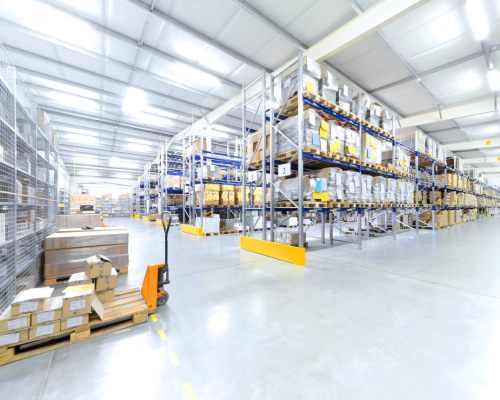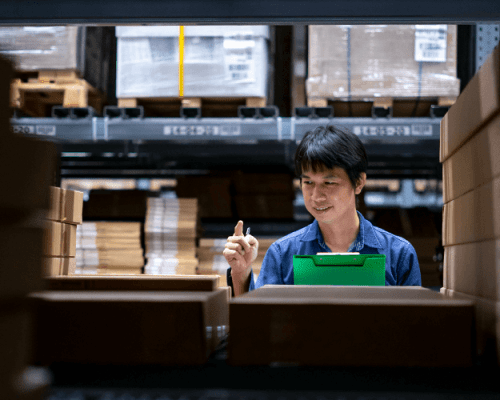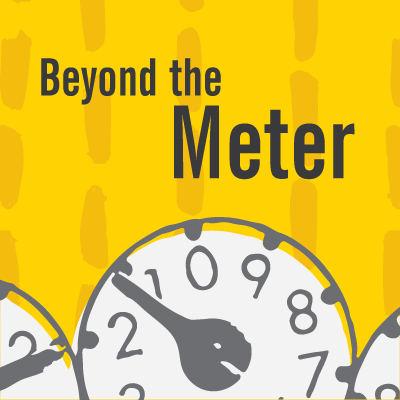5 Key Takeaways from LOTL: The Evolution of Energy in the Retail/Grocery Space
Recently, we sat down with Denis George of The Kroger Company to discuss how energy has changed the grocery/retail segment, what new technology may help the industry and his best tips for new energy managers.
Our Guest
Denis George is the category manager for energy with The Kroger Company and has over 40 years of experience in energy. Since 2016, he’s been on the sourcing side, focused on deregulated energy purchases, renewables, generators, demand response and continuing energy efficiency initiatives.
Our Host
John Frank is key segment manager for the retail/distribution e-com, logistics segments at Duke Energy Sustainable Solutions.
Takeaway 1: The Current State of Energy in Grocery/Retail/Distribution
On what drives grocery/retail:
“There’s always been an emphasis on reliability in grocery. It’s important in that we are subject to a lot of food safety regulations, food safety laws, and we want our food to be fresh and appealing and attractive. We need equipment that is running at consistent temperatures and consistent manner so that food stays fresh, stays appealing, stays safe. And that applies to the whole supply chain and business.”
On energy use:
“Refrigeration by itself is probably 50% of our energy usage and that is pretty darn important and very much a focus for us. […] Refrigeration doesn’t go home. So even if the store isn’t open 24 hours or seven days a week, whether our customers come to our stores, whether we deliver to them, whether they pick it up, it is all part of what we do. So, we are always looking at all 8,760 hours of the year and how to maintain them.”
On how technology in the segment has changed:
“Currently there are a lot of robotics in what we do, whether it’s distribution operations, fulfillment, center picking, there’s lots of electronics in the store, more Wi-Fi systems. It all requires reliability. It all requires electricity. So that all adds up now, on the good side, I think it increases efficiency as well. And every generation of that equipment is far more efficient than the generation before.”
Takeaway 2: Energy Efficiency
On where to start:
“Energy efficiency even today remains the best focus you have as an energy person. […] Once you get that going you can start wrapping in renewables both on-site and off-site, you can wrap in demand response and demand management.”
“Don’t really focus on solar rooftop system if you’re still using inefficient lighting. The old adage is you got to get lean before you go green. And I’m a big believer in that. […] Get under the roof, get inside the walls, walk the plant with the engineers, work with your finance people.”
On how efficiency affects equipment purchases:
“Don’t look at just the first cost of equipment. […] Don’t buy something because it’s cheaper at first. If it uses more energy, you’re paying more. Focus on what’s smart. You know, you think about a lightbulb’s job. So, the total cost of ownership of the lightbulb. 90% of it is the electricity, not the cost of the bulb. So why are you putting in T-12 lamps when you can put in LEDs and save money forever?”
Takeaway 3: The Importance of Environmental, Social and Governance (ESG) Goals
On The Kroger Company’s ESG goals:
“There’s incredible interest in it and it goes beyond just energy. We’re one part of a huge program called ESG at The Kroger Company. […] But we’re committed to zero hunger, zero waste. We have a stated goal as a company to eliminate hunger in America. […] And to do that, we need to focus on being efficient, reducing waste, focus on our associates and our people, our customers, our vendors, and make the point known that these issues are important. Climate change is real and it’s important. Environmental justice is a real issue and it’s important.”
On how ESG is interconnected:
“We want to reduce hunger in America. […] We want race equity. These are all stated goals of the company, and we support them all. And energy doesn’t stand separately from any of the company goals. We have energy vendors, we have diversity vendor goals. […] We have to get our energy vendor base more diverse.”
On ESG and efficiency:
“You can’t be wasteful. It’s just bad business. So, everything in ESG, frankly, is good business, and it becomes better business […] when you start factoring in waste and factoring in the efficiencies. What we’re doing is just at the end of the day, good business. So, there’s not “our business” and ESG on the other side of it.”
On how to address emissions that come from the supply chain and distribution chain of a company (Scope 3 emissions):
“If they have a supplier database, let’s find out who they are and what they’re doing. Encourage your sourcing department or whoever signs up for supplies from all your customers, cost of goods, facilities or otherwise. And if you bid for products and services, put a few questions and ask about their ESG goals, ask about their supply chain work, ask about their risk management plan for electricity and natural gas. [It’ll] enable the people around you who work with all your suppliers to ask the questions for you and find a way to collect the data. […] Start with the largest ones and work backward.”
Takeaway 4: New/Upcoming Technology
On the evolution of new technology:
“I’m an advocate of technology because it helps us get to our goals sooner, better and faster. You know, there’s fuel cells and more than one fuel cell creator now. There’s a couple out there doing all kinds of cool things. You’ve got the electric vehicle development, you’ve got battery development, you’ve got advances in LED lighting, you’ve got advances in controls. But there’s nothing that isn’t getting better, smarter, faster. It may not be cheaper right now because of steel prices and aluminum or what have you.”
On the costs of new technology:
“If you’ve got something that’s going up in cost, there’s a way to address it somehow. […] If you’re afraid of asking for capital [from your company], there’s financing options and lots of ways to approach that. Don’t let the obstacles and the headwinds stop you.”
Takeaway 5: What New Energy Managers Should Know
Make friends with Finance
“If you’re coming into this from the facility side or the energy side, one of the first sets of friends you should make is your finance department, your CFO and the accounting group. Energy deals are as much […] finance driven as they are physically energy driven.”
You’re not alone
“It takes a team – it’s finance, it’s engineering, it’s facilities – all. And don’t forget your friends at the legal department. It’s all interrelated. Don’t shun the folks. They’re the folks who can help you out. [Being an energy manager] seems daunting sometimes. It is. But there’s lots of different kinds of folks who can help you deal with that.”
Understand and match risk
“A big part of [being an energy manager is] to understand how your company looks at risk. Is it risk averse? Is at risk aggressive? Because what you’re going to do on the energy sourcing side can match the risk pattern of your company, and it should […] resonate with them. And talk to your suppliers about how […] you measure risk, how do you manage it, do you even care about it, and what options you have to address those different levels of risk. If a supplier can’t address that with you, think about another supplier.”
Breaking down sourcing electricity
“If you are in a place where you can source electricity in the market, there are so many more options, so many more deal structures. You know, hourly market costs for electricity are great when they’re low. […] Fixed cost can be great if you’re driven by budget but sometimes you lose opportunity. My advice to a new energy manager on this [is to] look at how you use energy on the hourly basis over time – spring, fall, summer, winter, nighttime, daytime, weekends.”
With the Live on the Line series, we bring in industry professionals to answer your questions. Register to join our mailing list and stay up to date on upcoming sessions.



